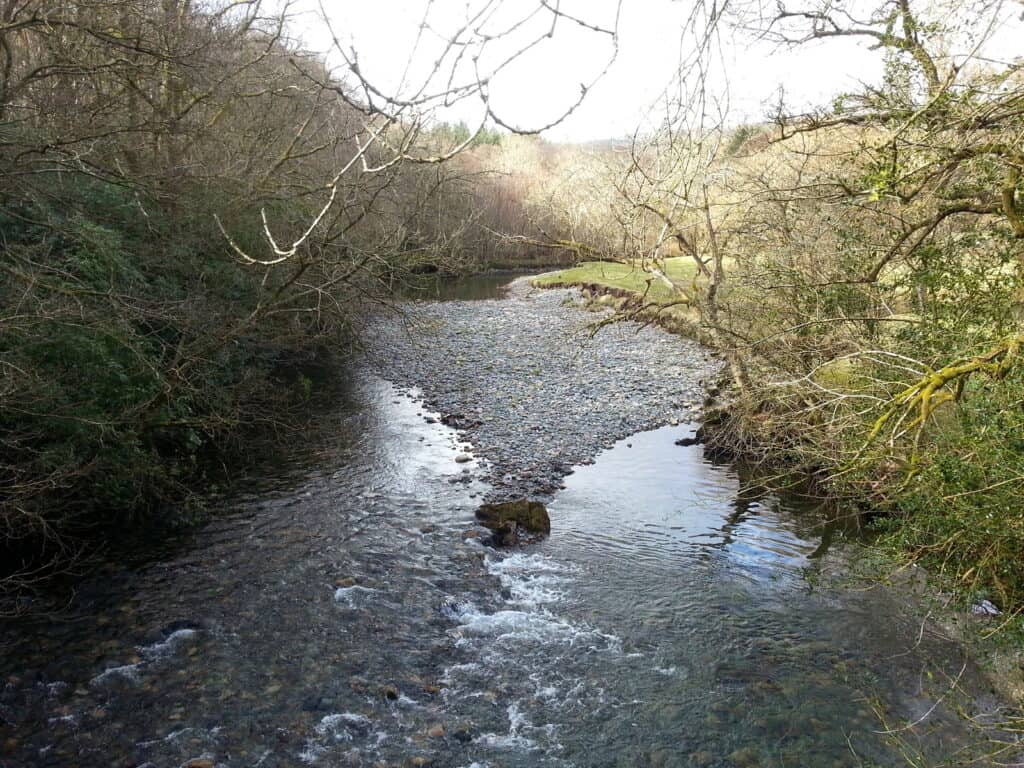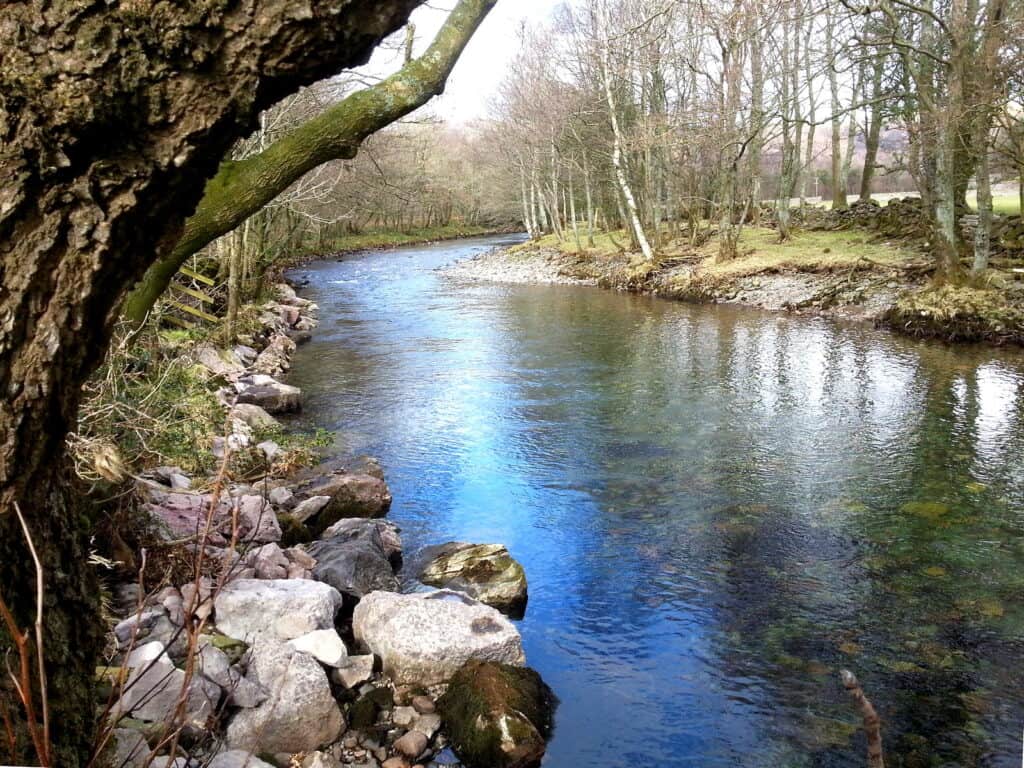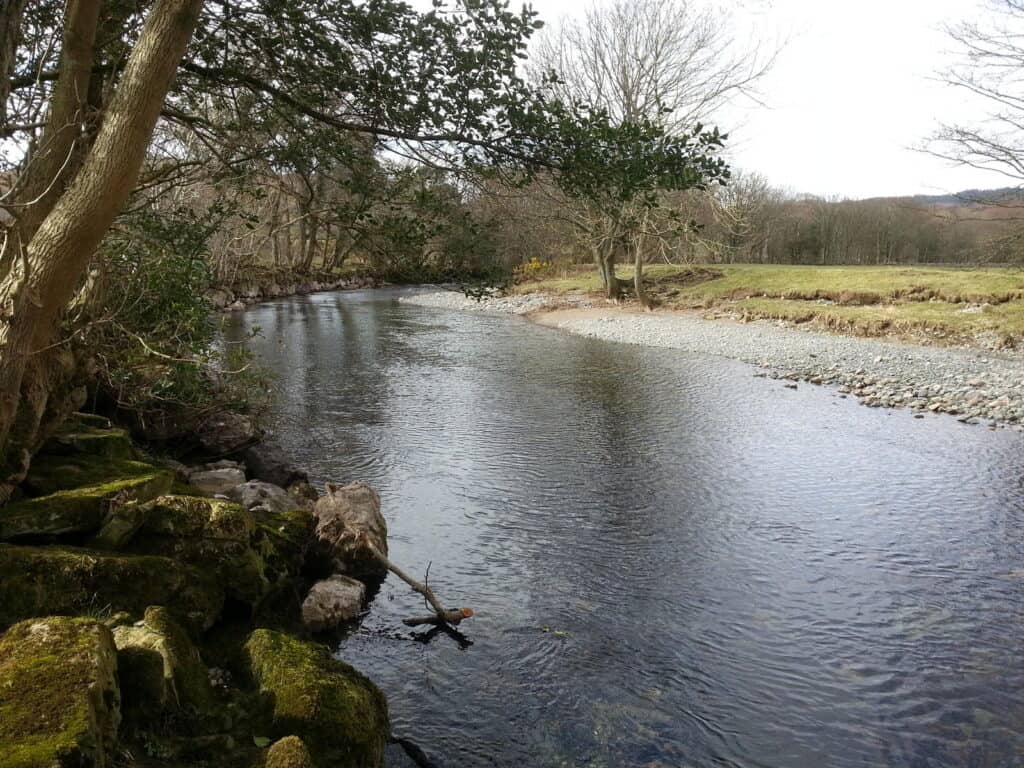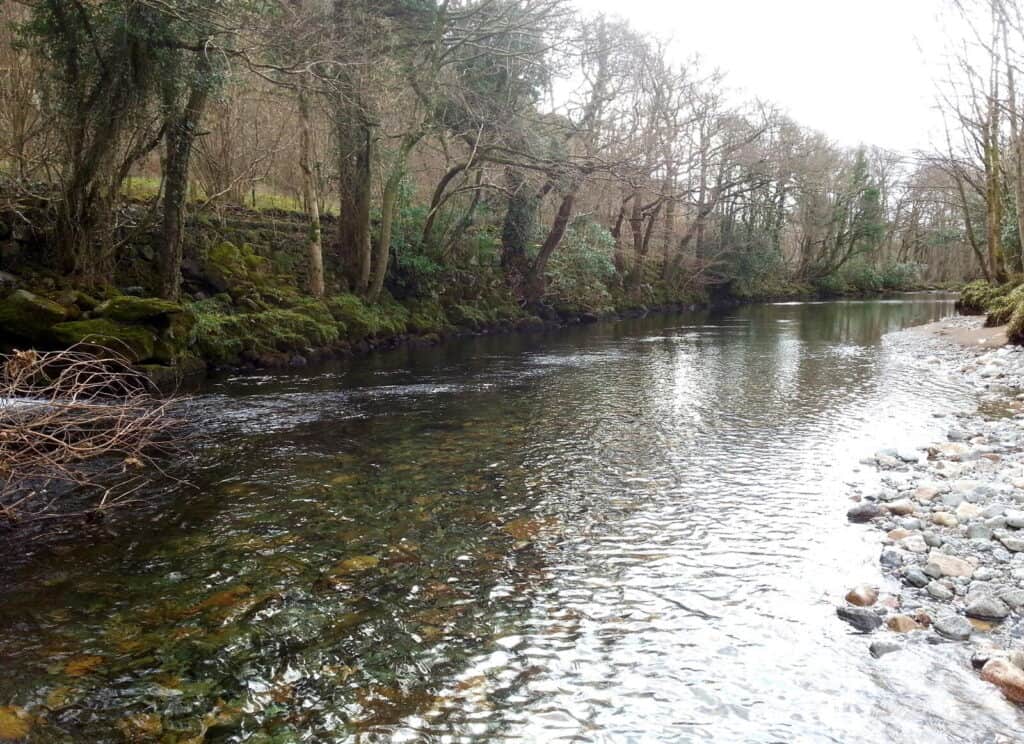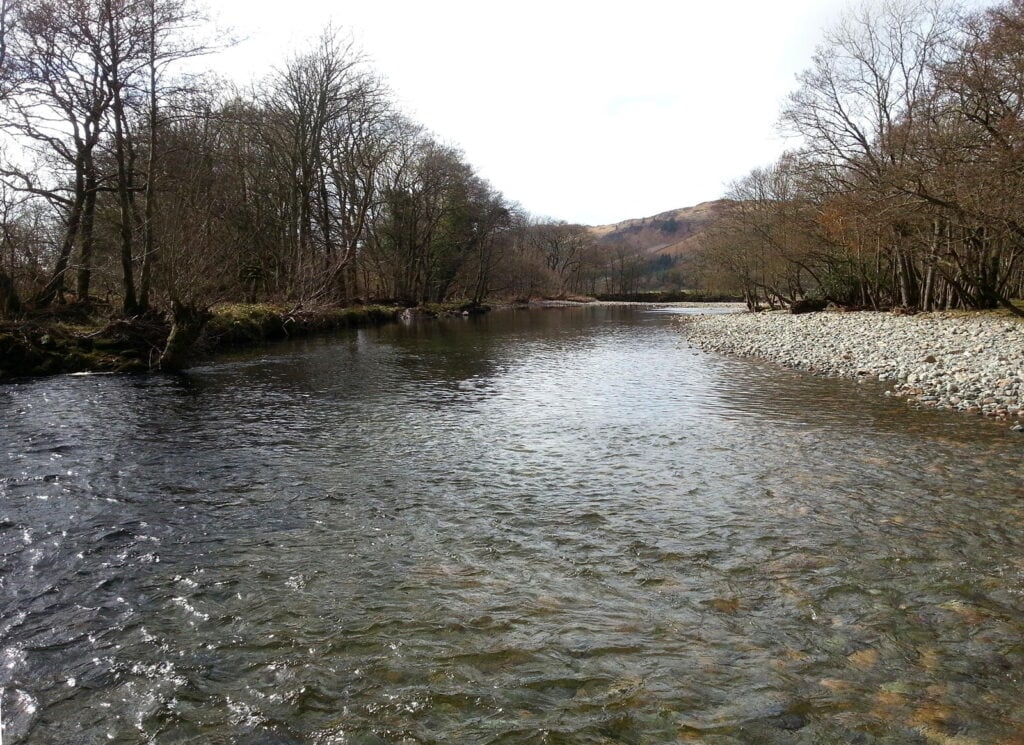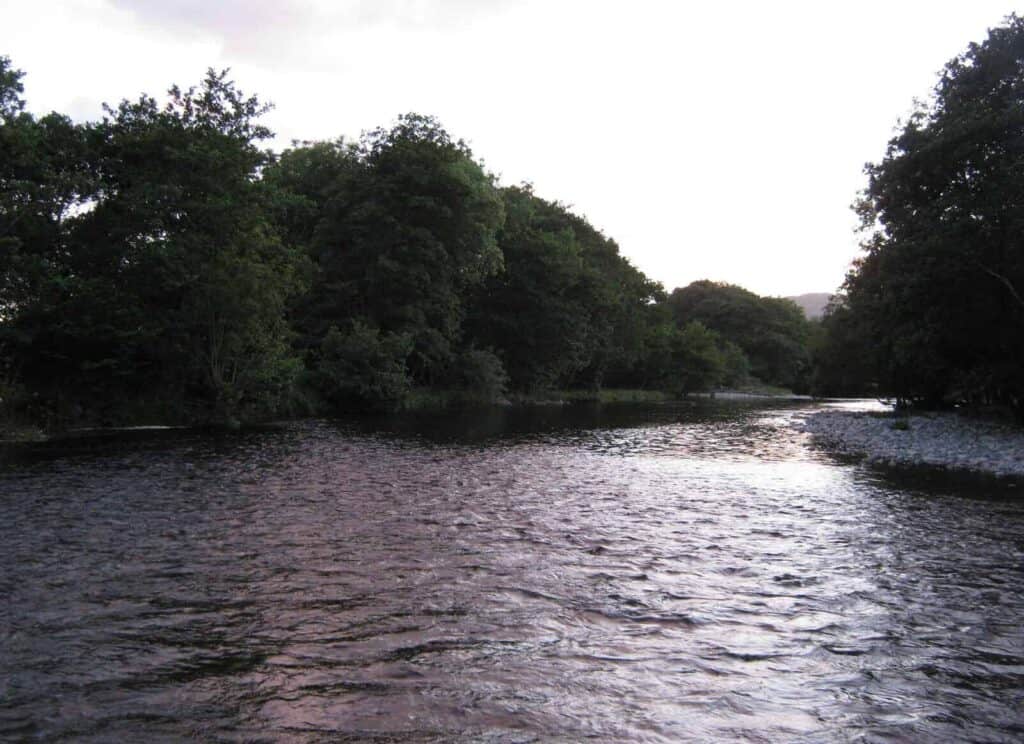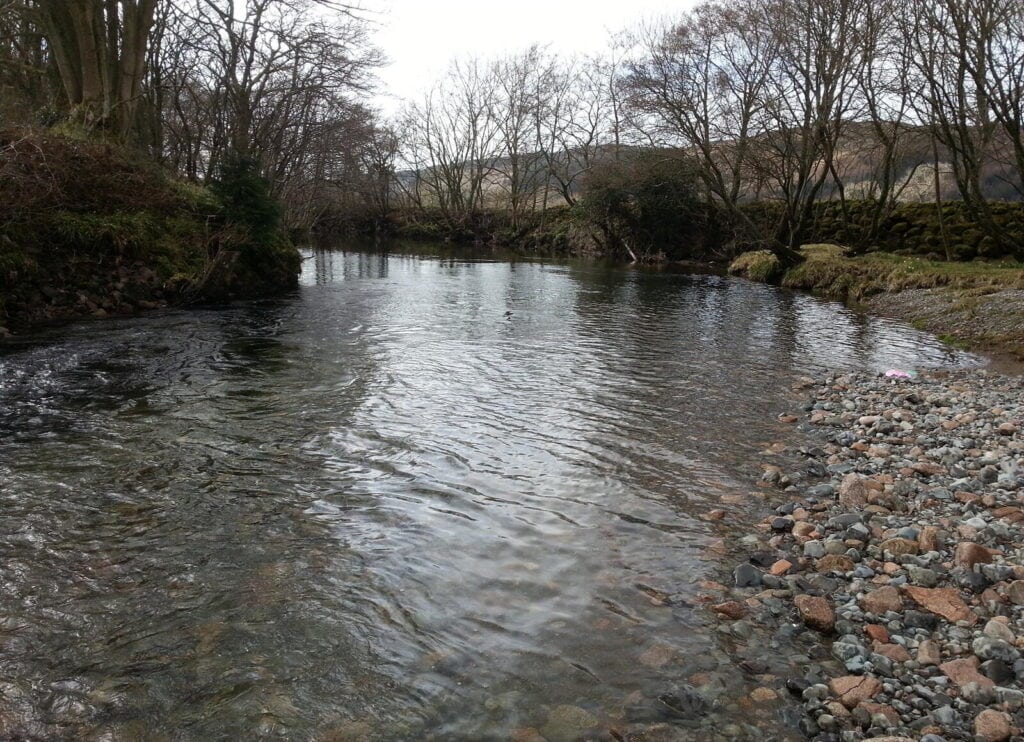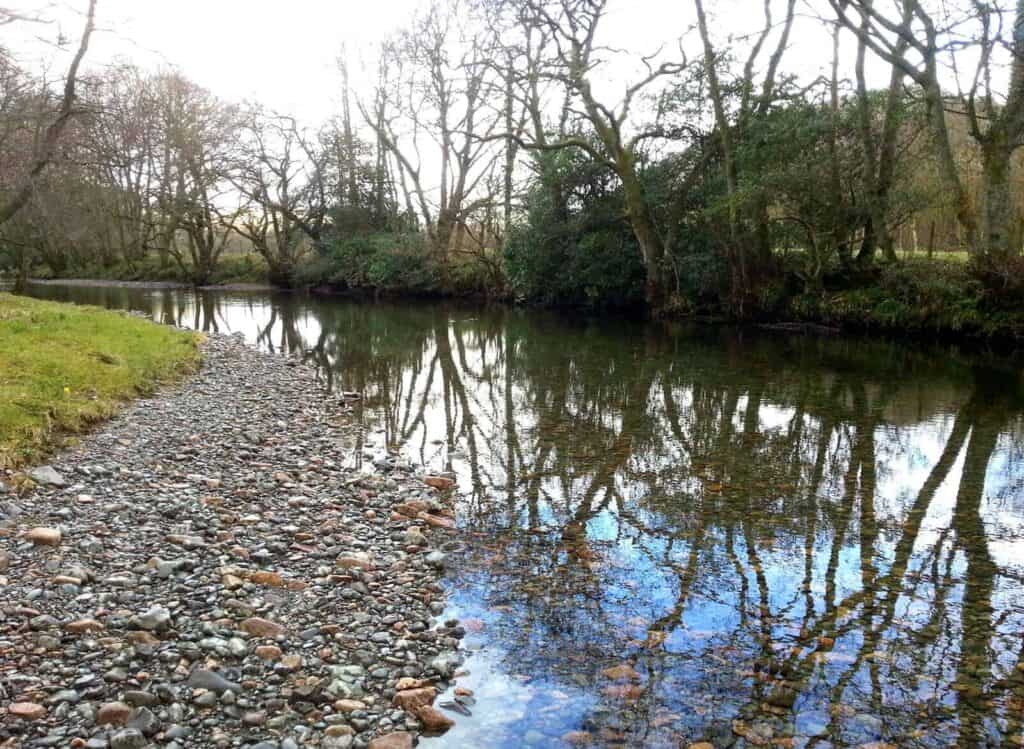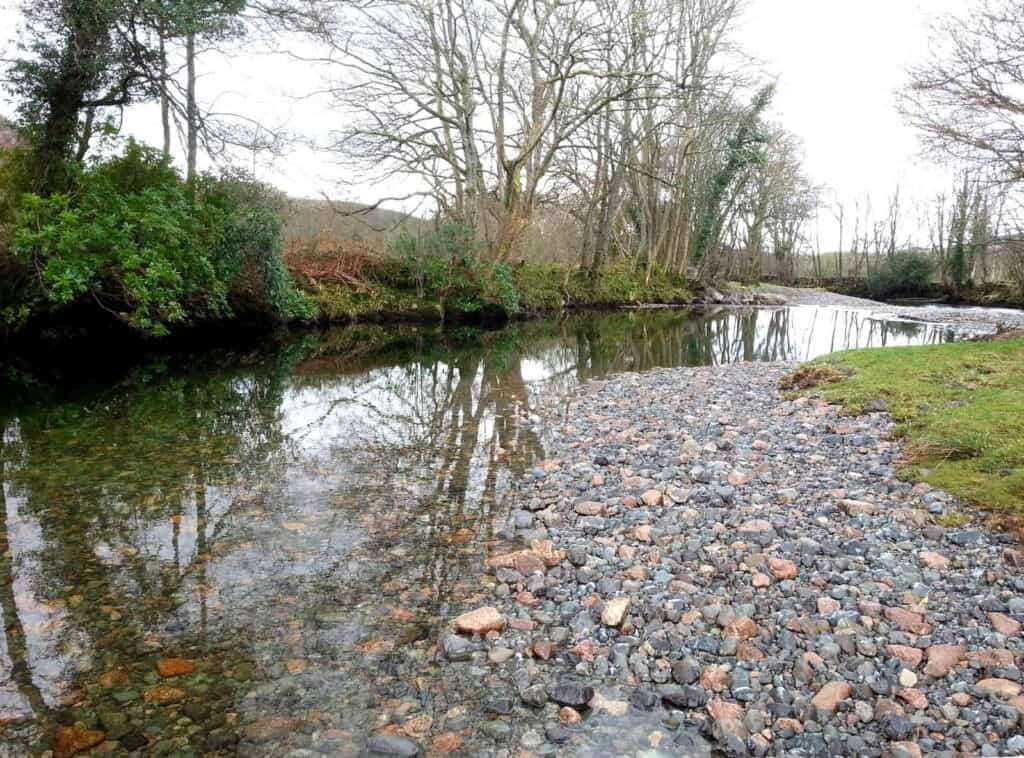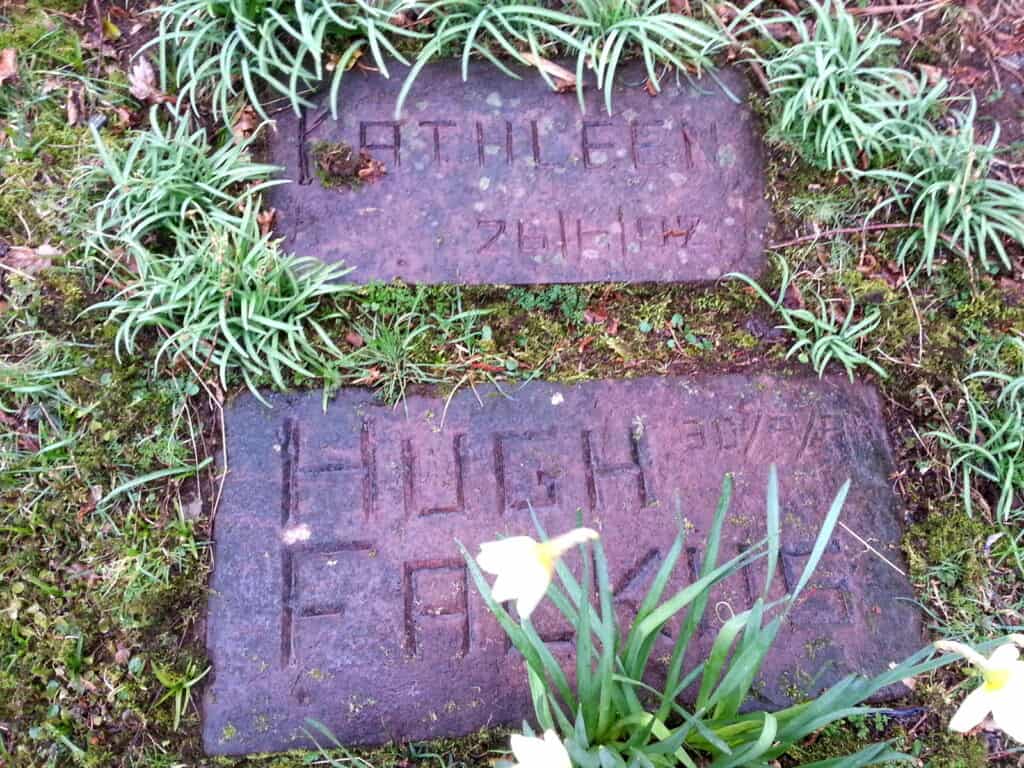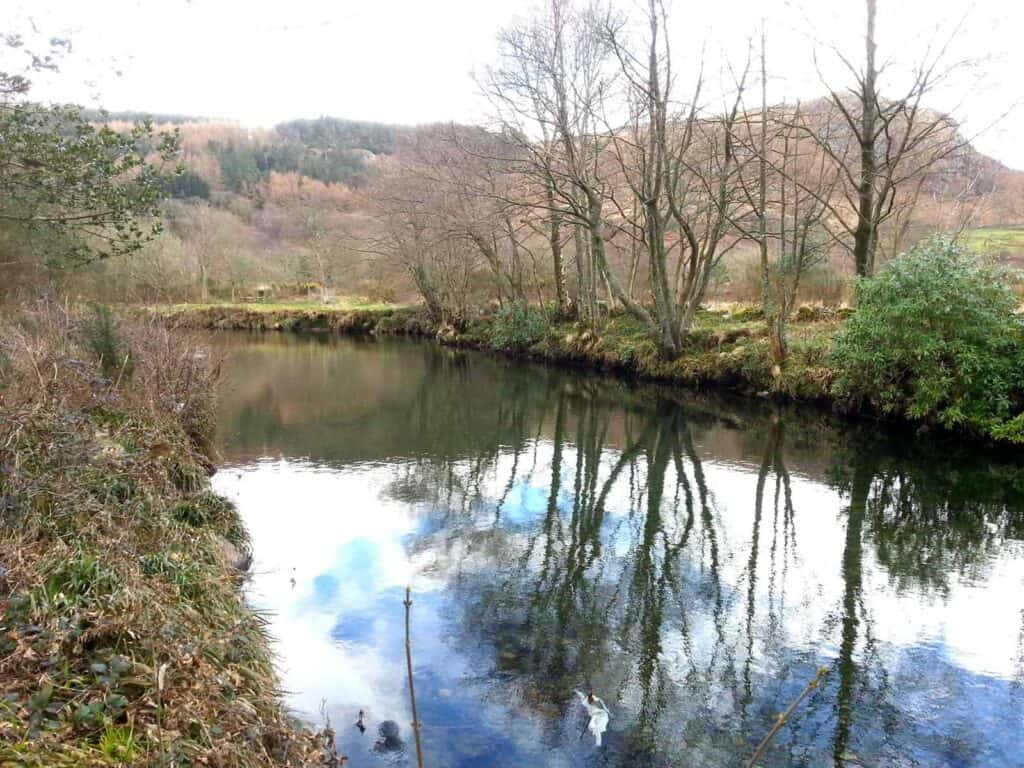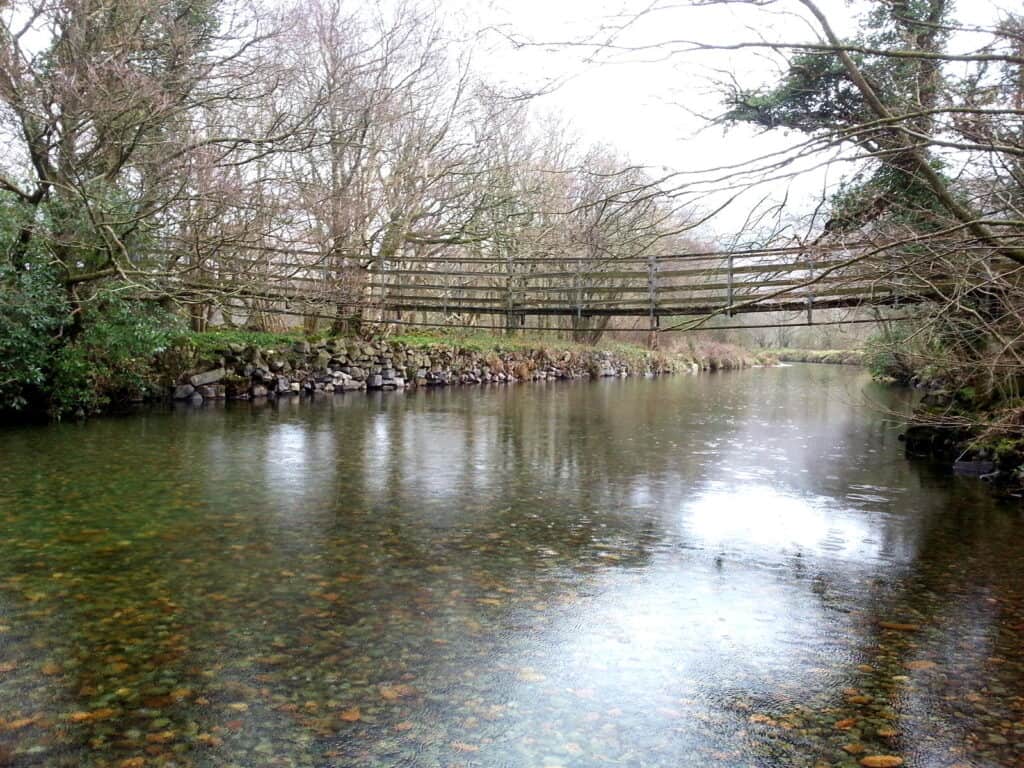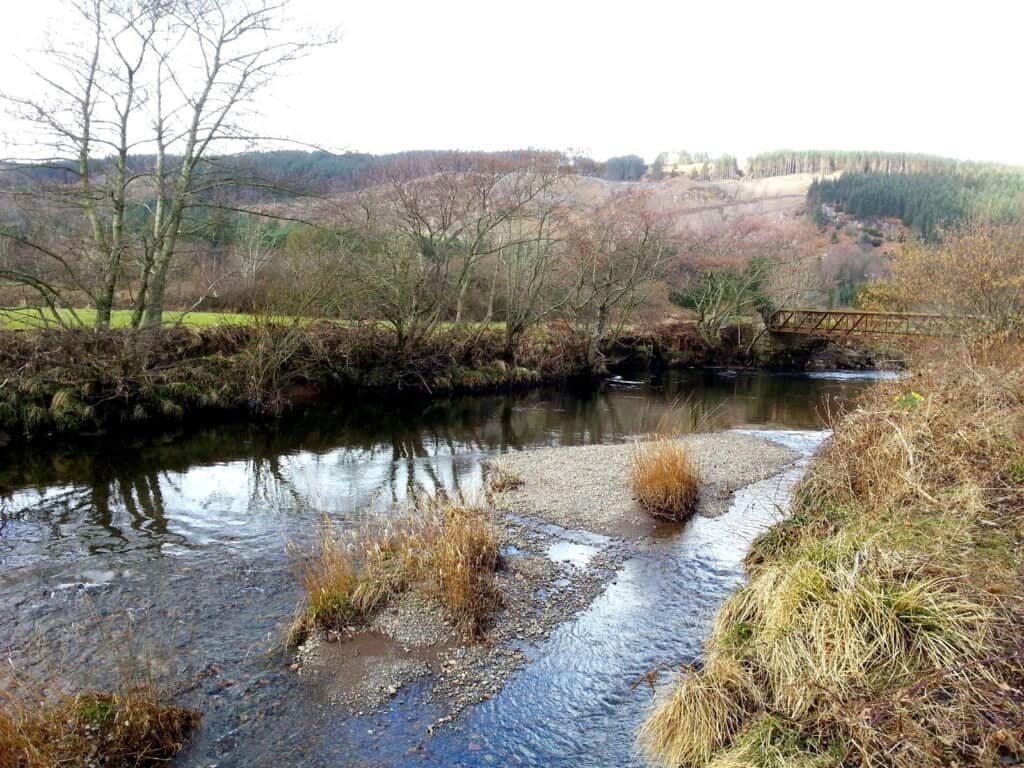The Sea Trout Pools on the Cumbrian Esk fished by Hugh Falkus
“Sea Trout Fishing” written by Hugh Falkus in 1962 had a great impact on the angling world, bringing a fresh perspective on the art of night fly fishing for sea trout. Although earlier writers like Jeffery Bluett had written enthusiastically, articulately and persuasively about night fly fishing on British sea trout rivers, in Bluett’e case on Devon’s River Tavy, Falkus’s book seemed to capture the imagination of a whole generation of game fishermen, encouraging many to take up this exciting new branch of the sport. Sea trout night fishing had of course been practised on the rivers of Wales, England, Scotland and Ireland for many decades before these publications but I think it is fair to say that it was a minority sport, practised by a relatively small band of enthusiasts and not widely publicised. Sea trout were often caught, on rivers, as an incidental by-catch by salmon fishermen while fishing during the day, or boat fishing on the lochs and loughs of Scotland and Ireland. Few early writers on sea trout fishing devoted much time to night fishing. Even writers such as R.C Bridgett wrote somewhat apologetically about resorting to the fly at night, unless under extreme conditions of low water. Fishing at night was widely regarded by many salmon fishers as a bit of a dark art, not quite a proper pursuit for gentlemen. Falkus’s book Sea Trout Fishing, beautifully written by a man who evidently knew what he was talking about, cast a new light on the subject, giving fly fishing at night a degree of respectability.

Hugh Falkus lived with his wife Kathleen for much of his life at Cragg Cottage in Eskdale, a short walk from the best fishing pools on the Cumbrian Esk, on the first two or three miles above the tide. He took full advantage of this and spent many a summer night on the river perfecting his art of fishing the fly for sea trout during the hours of darkness. His knowledge and extensive experience gained over many years fishing this little spate river, combined with his undoubted talent as a writer, resulted in the publication of what is still widely regarded as the Sea Trout Fisher’s Bible.
Shown below are many of the sea trout pools – on the two or three miles of the lower river Esk between Forge Bridge near Eskdale Green and Hinning House, not far above the tidal limit – which Hugh Falkus and his many fishing friends would have fished, throughout the fifties and sixties, when sea trout were more abundant than today. In those days, many a sea trout would be caught on the fly at night on favourite pools such as Donald’s, Plumb Dub, Knott End Dub, Hazel Dub and Meadow Dub, where Falkus and his wife Kathleen now lie at rest beside the simple fishing shelter on the left bank. The River Esk runs very clear, even in spate. It is a small river but has some deceptively deep pools, with some ideal holding lies for sea trout, although many of the pools are now heavily overgrown and not fished so much these days. Prince Albert Angling Society manages the fishing on much of this part of the river.
Sea Trout Fishing Pools on Falkus’s River Esk

WHERE FALKUS FISHED
Sea Trout Fishing Pools on the Cumbrian River Esk fished by Hugh Falkus
The gallery below shows photographs of the main fishing pools on the Cumbrian Esk from Lord’s Bridge near Eskdale Green down to Hinning House, a river length of two to three miles. The pools are shown upstream to downstream, beginning with the pool just upstream of Lord’s Bridge. Most of the photographs were taken in March. Sea trout and salmon would run from early summer, with numbers increasing throughout the summer months into the autumn. Fish, both salmon and sea trout, would be caught on fly, spinner and worm during the day on a falling spate. The river would clear quickly and would be fishable with fly at night for sea trout on the pools shown below once the level had fallen to less than a foot on the gauge at Stock’s Bridge.
Falkus might begin his night’s fishing, once it was truly dark, with a Medicine fly, probably his favourite all-round fly, in a size 2 or 4 depending on the river level and degree of darkness. This would be fished through the first hour or two of darkness. On most nights this “First Half” would be the period of most intense sea trout activity.
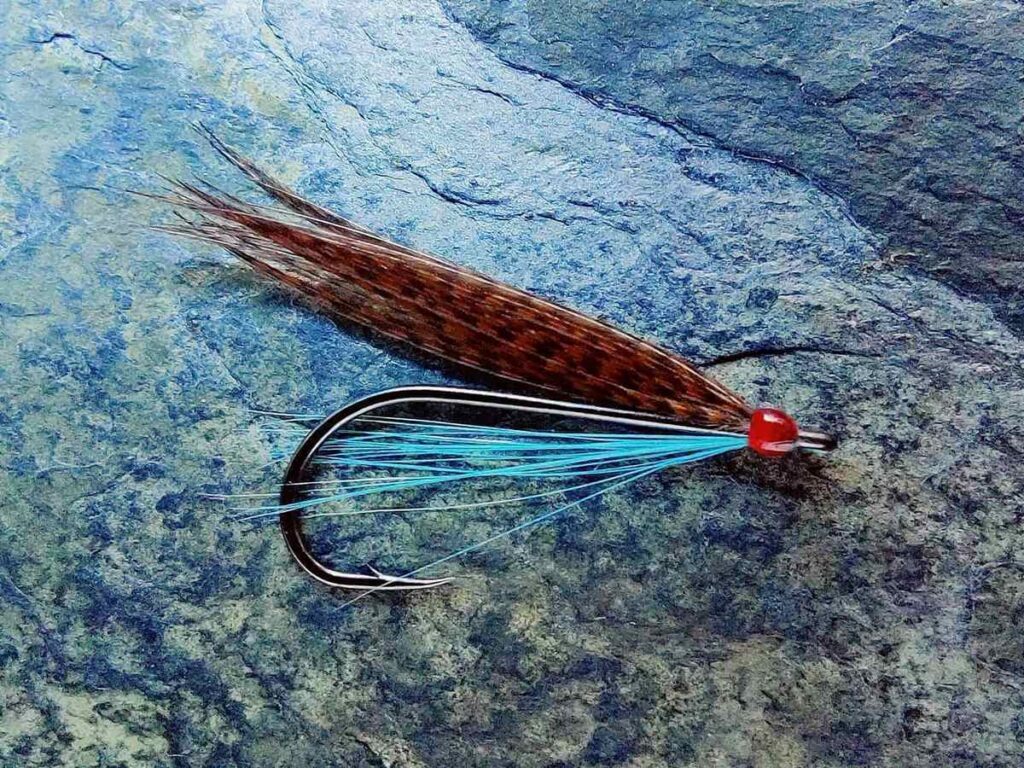
On a good night, a few sea trout would be caught before a probable lull in the proceedings, “Half Time” as Falkus called it, beginning sometime around midnight, the precise timing again depending on the time of year and the weather conditions on the night. After a half-time break, if things remained quiet, the “Second Half” would see a change to a larger fly such as his tandem-hooked sunk lure, to be fished slowly and deeply on a sunk line. This period of the night would not usually produce as many fish as the first hour or two of darkness, but might, on occasion, tempt a larger stamp of fish, especially if he concentrated on known lies. If the night was dark, particularly late in the season, he might revert to his earlier floating line to swing a surface lure across the pools at intervals throughout the night. As dawn approached, he would often replace the surface lure with the medicine fly, to take advantage of a short period of renewed sea trout interest which often occured just before daylight. Falkus called this “Extra Time”. The pools Falkus fished, shown below, on this small clear spate river, are not the easiest to fish, requiring stealth, skill, confidence and perseverence – but there are few more special places to spend a summer night, before watching the sky catch fire behind Scafell!


